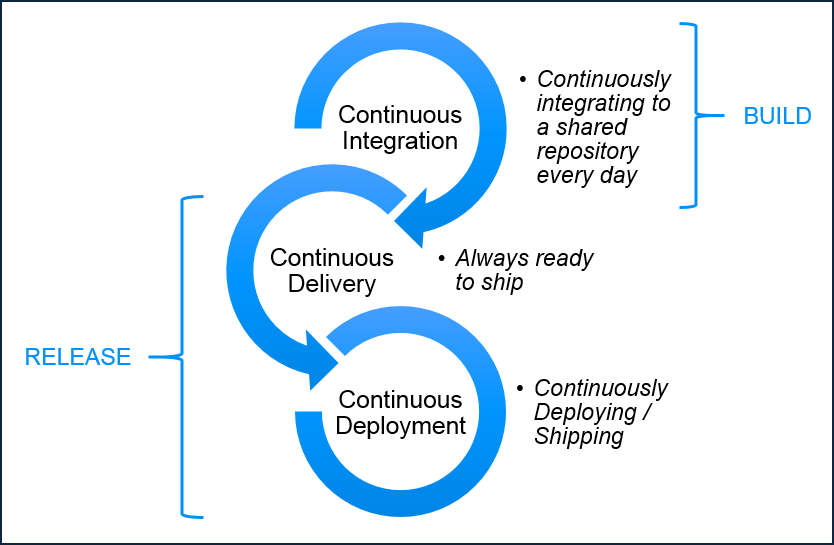
Release management with Pega Platform
DevOps
DevOps methodology operates under three pillars: people, process and technology.
DevOps is a set of practices that bridge application development and operational behavior to reduce time to market without compromising on quality and operational effectiveness. It allows application developers and business owners to quickly respond to customer needs, develop a quicker feedback cycle, and ultimately achieve business value faster.
DevOps People
DevOps encourages a culture of collaboration between development, quality, and operations teams to reduce or eliminate barriers through fundamental practices such as continuous integration, continuous delivery, and continuous deployment. Adopting these practices and the tools to support them creates a standardized deployment process so that you can deploy predictable, high-quality releases.
Continuous integration and delivery
A continuous integration and continuous delivery (CI/CD) pipeline is an automated process to quickly move applications from development through testing to deployment.
The Pega CI/CD pipeline
The following image depicts the high-level overview of the Pega CI/CD pipeline. Different questions are asked during every stage of the pipeline. These questions can be grouped into two categories:
- Developer-centric questions
- Customer-centric questions
In the following image, click the + icons to see the pipeline questions.
Continuous integration
With continuous integration, application developers frequently check in changes to the source environment and use an automated build process to automatically verify these changes. The Ready to Share and Integrate Changes steps ensure that all the necessary critical tests are run before integrating and publishing changes to a development repository.
Continuous delivery
With continuous delivery, application changes run through rigorous automated regression testing and are deployed to a staging environment for further testing to ensure that the application is ready to deploy on the production system.
In the Ready to Accept step, testing runs to ensure that the acceptance criteria are met. The Ready to Deploy step verifies all the necessary performance, scale, and compatibility tests necessary to ensure the application is ready for deployment. The Deploy step validates in a preproduction environment, deploys to production, and runs post-deployment tests with the potential to roll back as needed.
DevOps technology
You can start your DevOps journey by using Deployment Manager, and you can also integrate third-party tools.
Deployment Manager
Use Deployment Manager to configure and run continuous integration and delivery (CI/CD) workflows for your Pega applications from within Pega Platform™. You can create a standardized deployment process to deploy predictable, high-quality releases without using third-party tools. With Deployment Manager, you can fully automate your CI/CD workflows, including branch merging, application package generation, artifact management, and package promotion to different stages in the workflow.
Third-party tools
Pega Platform also includes support for open DevOps integration using popular third-party tools such as Jenkins and Microsoft Azure DevOps by providing an open platform, with all the necessary hooks and services. With open DevOps integration, you can build a deployment pipeline by using third-party tools to automate branching.
Check your knowledge with the following interaction.
If you are having problems with your training, please review the Pega Academy Support FAQs.
Want to help us improve this content?


